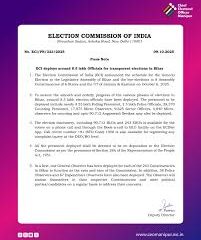Nilambur Election 2023: Key Insights and Updates

Introduction
The upcoming Nilambur election, scheduled for later this year, is gaining significant attention not only for its political implications but also for its impact on local governance and development in the region. As candidates gear up for the polls, the political landscape is heating up, showcasing a variety of issues that resonate with the electorate in this southern Indian constituency.
Current Political Landscape
Nilambur, located in the Malappuram district of Kerala, has been a focal point for various political parties in the state. Historically, the region has witnessed a tussle between the Indian National Congress (INC) and the Left Democratic Front (LDF). The 2023 election is expected to be competitive, with both parties fielding candidates who have significant local support and political experience.
Amidst increasing voter awareness and engagement, major issues such as unemployment, infrastructure development, and environmental conservation have surfaced as key topics of discussion. The candidates are actively campaigning to address these concerns, promising to bring about effective change that aligns with the aspirations of the Nilambur citizens.
Recent Developments
As the election date approaches, the political atmosphere is charged with various events and rallies taking place across the constituency. Local leaders are mobilizing their support bases, aiming to attract undecided voters, particularly the youth. The Election Commission has also set stringent guidelines to ensure a free and fair electoral process, including measures against the misuse of money and muscle power.
In addition, voter awareness campaigns have been intensified, with NGOs and civic groups working in collaboration with local authorities to educate voters about their rights and the importance of participating in the democratic process.
Significance of the Election
The outcome of the Nilambur election will have broader implications for the political climate in Kerala. It will serve as a litmus test for the performance of the current ruling government and will reflect public sentiment regarding critical state issues. Moreover, given the strategic geographic position of Nilambur, the election results could influence future electoral strategies across neighboring constituencies.
Conclusion
As the Nilambur election approaches, its significance is palpable—both for the candidates vying for power and the citizens looking for representation. The engagement levels among voters suggest a shift towards a more informed and proactive electorate. With the stakes high, all eyes will be on Nilambur to see how the aspirations of its people translate into electoral outcomes in 2023.









